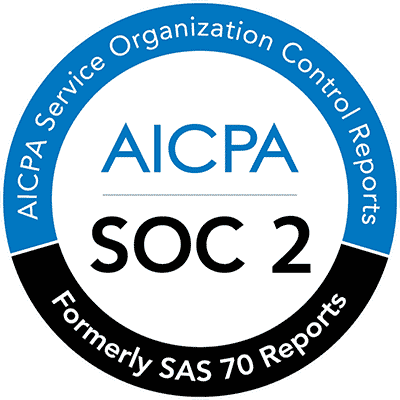There are well-known KPIs (Key Performance Indicators) that your organization should use routinely to measure the health of your RCM process. Reviewed together, they provide insight as to where you should focus your efforts to avoid lost monies and/or compliance risk. And while KPIs are critical to managing your billing and accounts receivable performance, it is important to understand how the indicators are calculated to identify what is really occurring.
Here are examples of common KPIs, along with potential misses that could mask weaknesses that need to be addressed.
- Percent of aging over 90 days (options also include 60 days and 120 days)
- Days in Accounts Receivable (DAR)
- Gross Collection Rate (GCR)
- Net Collection Rate (NCR)
- Denial Percentage
Days in A/R: Current Accounts Receivable / Average Daily Charges (Total Charges for Last 365 days / 365)
Possible pitfalls:
- Can be manipulated by writing off balances that might otherwise be collectible
- Fluctuations in your charge volumes can impact this (e.g., COVID, seasonal practice, provider vacations, etc.)
- Practices with liberal budget plans may have a higher number
- Built-in charge lag days for auditing purposes
- May not take outstanding credit balances into consideration.
For example, present AR over 90 days is $2M, and total AR is $10M equating to an AR > or = 90 of 20%. What if there were $1M in credits over 90 days contributing to the total of $2M? Computing the metric properly would push the numerator to $3M and your resulting KPI to 30%.
Credits can not only cause problems with adjudicating the encounter properly — as well as patient satisfaction issues — but can pose compliance risks for your practice, so it is important to look at both factors in the arithmetic.
Gross Collection Rate (GCR): Total Payments / Total Charges = GCR
Possible Pitfalls:
It is helpful to compare your billing performance versus other peer groups within your city, state, and across the country. GCR is a good barometer on your chargemaster, but it is not very helpful to use this KPI because of the variances that will more than likely exist between your fee schedules. Note the examples below and how the denominator affects the percentage.
Medical Practice (A)
Office Visit Charge: $150
Allowable: $85
Resulting GCR %: 57% (85/150)
Medical Practice (B)
Office Visit Charge: $250
Allowable: $85
GCR: 34%
- On the surface, the difference between the two is not indicating poor performance, and further analysis starting with the other KPIs is warranted.
- Note, as with the other KPIs, the GCR may be skewed when comparing different time periods and/or if the fee schedule was modified during the time period.
Net Collection Rate (NCR): is often defined as matched Payments less Refunds divided by Charges less Contractual Adjustments. Another variation is Payments Plus Contractual Adjustments, then divided by Charges.
Ideally, NCR should be in the 96-98% and translates to how much of the collectible dollar you are realizing.
In order to compute this KPI accurately, your definition of adjustments, along with accurate use, is essential for you to compute NCR. Many practices may not be measuring Contractual Adjustments separately or Non-Contractual Adjustments correctly.
For example, if you need to write off a charge for timely filing and it is labeled “Insurance Adjustment” instead of “Timely Filing Adjustment”, it will be very difficult to separate and measure accurately. When contractual and non-contractual adjustments are rolled together, your NCR will be inflated, and it will appear you are successfully resolving claims at a higher rate than is actually occurring.
We also believe in measuring this metric with matched monies rather than what was posted for the month. The definition of matched monies (or liquidated charges) is that we are measuring the charges against the payments and adjustments for that particular group of charges (maybe a month or some other time frame). There is also confusion on this metric when the result is 101%, for example. How can this be? This can happen if you are over-collecting (usually on patient dollars) and probably have a disproportionate amount of claims with credits in your sampling.
For example, if the patient has a charge of $1,000, the patient pays $200 at the time of the visit, and the payer adjudicates in full, resulting in a payment of $400 and an adjustment of $500. This leaves a -$100 balance on the account. This also has a 110% NCR because the payments and adjustments totaled $1,100 while the charge was only $1,000. Once the refund is issued to the patient for $100 (the amount they overpaid), then the NCR will align to 100%. If the patient never paid at the visit and the balance was $100 to the patient, and it goes into bad debt, this NCR would be 90%.
Denial Percentage: wins the contest on having the most definitions. When practices ask what an appropriate denial percentage is, our answer is usually “lower.”
There are many misleading factors in this percentage as well. The first challenge is agreeing on how to calculate.
- Do you look at denials posted last month against the charges you entered last month?
- Do you look back 90 days or so when the claims are more fully adjudicated and match the denial received to the charge it was posted against?
We are almost always in favor of matching data to the original source, the charge. We have seen some practices that have a 12% denial rate and another has a 14% denial rate, but actually, the 14% denial rate group had a better rate due to a controlled or uncontrolled denial thought process. The group getting denied 14% of the time had about 3 percentage points for charges that the carrier doesn’t allow, but it may make sense to file to the carrier.
Example: CPT 99024, which is a post-surgical follow-up visit. The practice wants to document that they gave care but knows the carriers are not allowing it from the standpoint of issuing any payments that are usually considered global. There are also various ways to measure denial rates, such as counts versus dollars. We will expand on denials in future articles.
In summary, any of these KPIs without context and understanding of the data that arrived at “the number” is meaningless. Once you establish your own meaning and you know what the components and subcomponents are of your data, only then can you make plans to move these numbers in the right direction.
Kristen Closson, COO
Viewgol®
9.3 minutes


